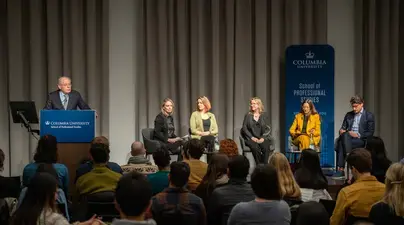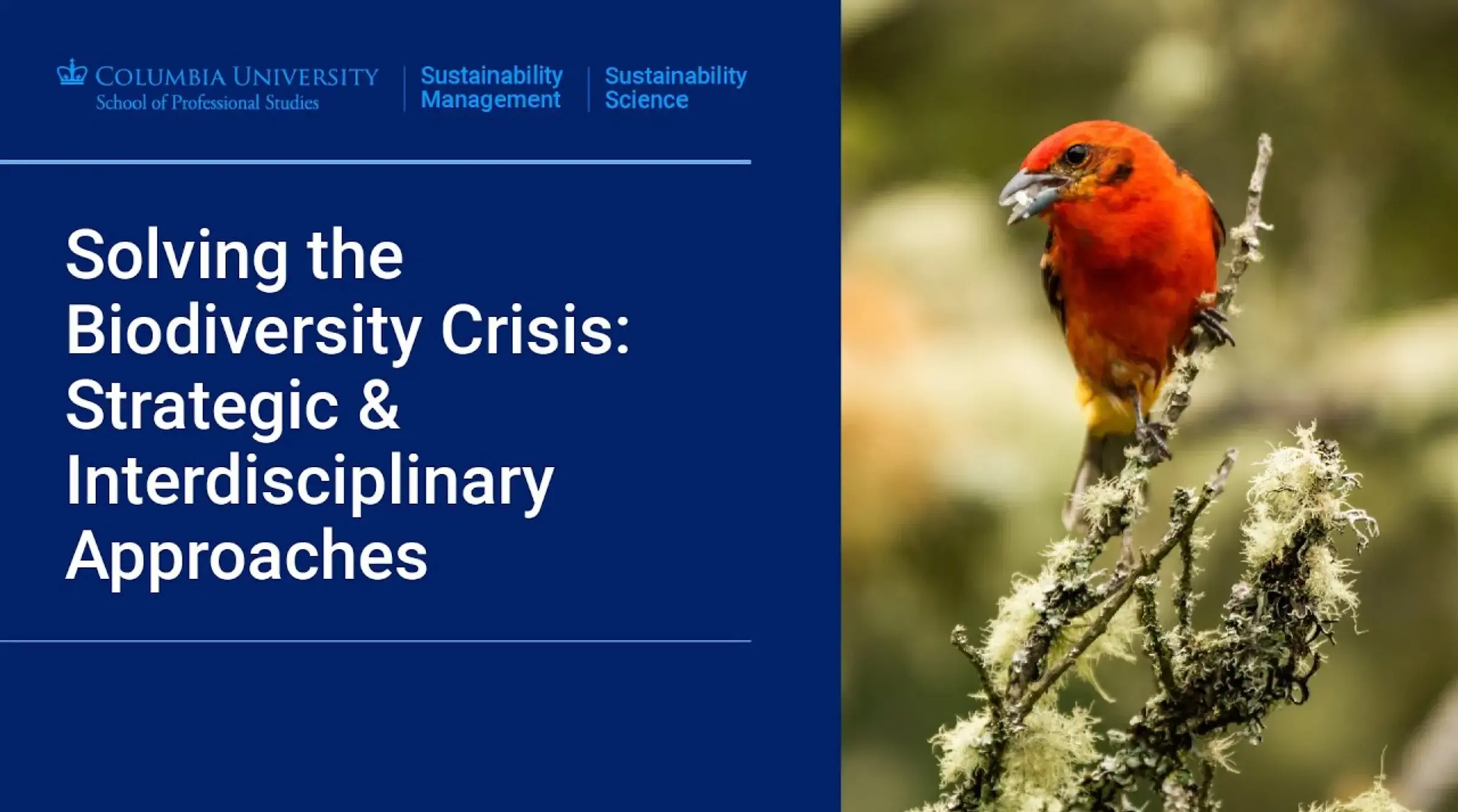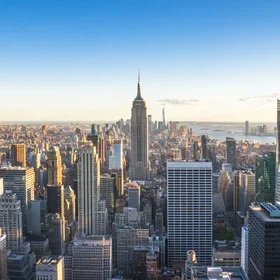Protecting biodiversity—the variety of living things in our natural world—is increasingly seen as a necessary part of sustainable business practices. A recent panel discussion hosted by Columbia University’s graduate programs in Sustainability Management and Sustainability Science considered just how such priorities can be put into practice.
Moderator Wendy Hapgood (’17SPS, SUMA), a lecturer in the Sustainability Management program and cofounder and COO of the international conservation nonprofit Wild Tomorrow, set the tone with a personal reflection.
“When my grandmother was born, there were 10 million African elephants roaming the continent,” shared the South Africa-born scholar. “By the time I was born, which was in the ’70s, there were only a million left. And today, that number of African elephants has dropped to just over 400,000."
“They truly are one step below extinction,” she said. “They’re in our children’s storybooks, and yet we cannot seem to save them.”
Under the banner “Solving the Biodiversity Crisis: Strategic & Interdisciplinary Approaches,” the discussion and Q&A sounded plenty of alarms but still offered hope for the future to the full house in attendance at Pulitzer Hall.
Matthias Pitkowitz, founder and CEO of EQX Biome, a financial advisor for sustainable investing, pushed the discussion past the common examples of exotic wildlife.
“When we talk about biodiversity, the conversation often becomes lions and tigers and those other banner species,” he said. “But the thing that humanity needs to recognize, and this has already happened at the political level, is that insects and different animals and microorganisms together form really complex things that are the reason that we have an atmosphere and the reason we have a climate and the reason we are able to be here.”
EQX Biome was founded with the mission of creating investment opportunities that support protecting at-risk ecologies. “To be able to stop biodiversity loss … we need about $700 billion to $900 billion a year,” he said. “This money does not exist in public funding or in donations. If you offer investors an opportunity to deploy capital and get a little bit more back than they put in, then this funding gap is solved.”

Dr. Steven Cohen introduces the "Solving the Biodiversity Crisis" panelists at Pulitzer Hall. (l–r: Wendy Hapgood, Amy Karpati, Jenna Lawrence, Agnes Vinblad, Matthias Pitkowitz)
It’s this kind of innovative thinking that Columbia’s Sustainability Management program inspires, said Jenna Lawrence, a lecturer in the program and instructor in the Earth Institute Center for Environmental Research and Conservation. No industry is freed from reliance on, and responsibility for, the environment, she added.
“Fifty-five percent of global GDP is at least moderately dependent on these ecosystems, but so is the rest,” Lawrence said. “We are all dependent. Every business is dependent on biodiversity.”
Agnes Vinblad, the policy lead for climate, biodiversity, and environment at the United States Council for International Business, who has led delegations to the UN Biodiversity COP15 and key UN climate change negotiations, pointed out that industries that work internationally are already making efforts to introduce green practices even when laws are lagging behind.
The United States and the Vatican, she pointed out, are the only countries that aren’t members of the United Nations Convention on Biological Diversity. But corporations doing business internationally often fall under the regulations of other nations. “It’s encouraging to see that that willingness and that speed in the private sector are already speeding up,” Vinblad said.
Most businesses “are absolutely dependent on biodiversity, and we can now see stakeholders realizing that they are also at risk from biodiversity loss,” according to Amy Karpati, a lecturer in the Sustainability Management program and director of science and programs at Teatown Lake Reservation. But more action is needed, she said.
“We need a fundamental change for these problems to really be solved, and that can feel really intimidating and overwhelming, like, ‘Do we have to wait for a paradigm shift for those things to happen?’” she said. “But it’s these actions that cause the paradigm to shift. You don’t have to wait for it to happen. You contribute to it happening.”
Hapgood offered a ray of hope during the Q&A, pointing to the Florida Wildlife Corridor Act that dedicated $2 billion for preserving panther habitats.
“It’s possible to see and experience the hope of restoration,” she said. “Nature is super resilient. If you give it space and time and protect it and remove alien plants, it will restore.”
About the Sustainability Management Program
The Columbia University M.S. in Sustainability Management program, offered by the School of Professional Studies in partnership with the Climate School, provides students cutting-edge policy and management tools they can use to help public and private organizations and governments address environmental impacts and risks, pollution control, and remediation to achieve sustainability. The program is customized for working professionals and is offered as both a full- and a part-time course of study.
About the Sustainability Science Program
The Master of Science in Sustainability Science prepares students for management and leadership positions in which they help organizations address environmental impacts. Students learn strategies to respond to the ever-changing environment and predict future environmental changes—and the impact on the public.



